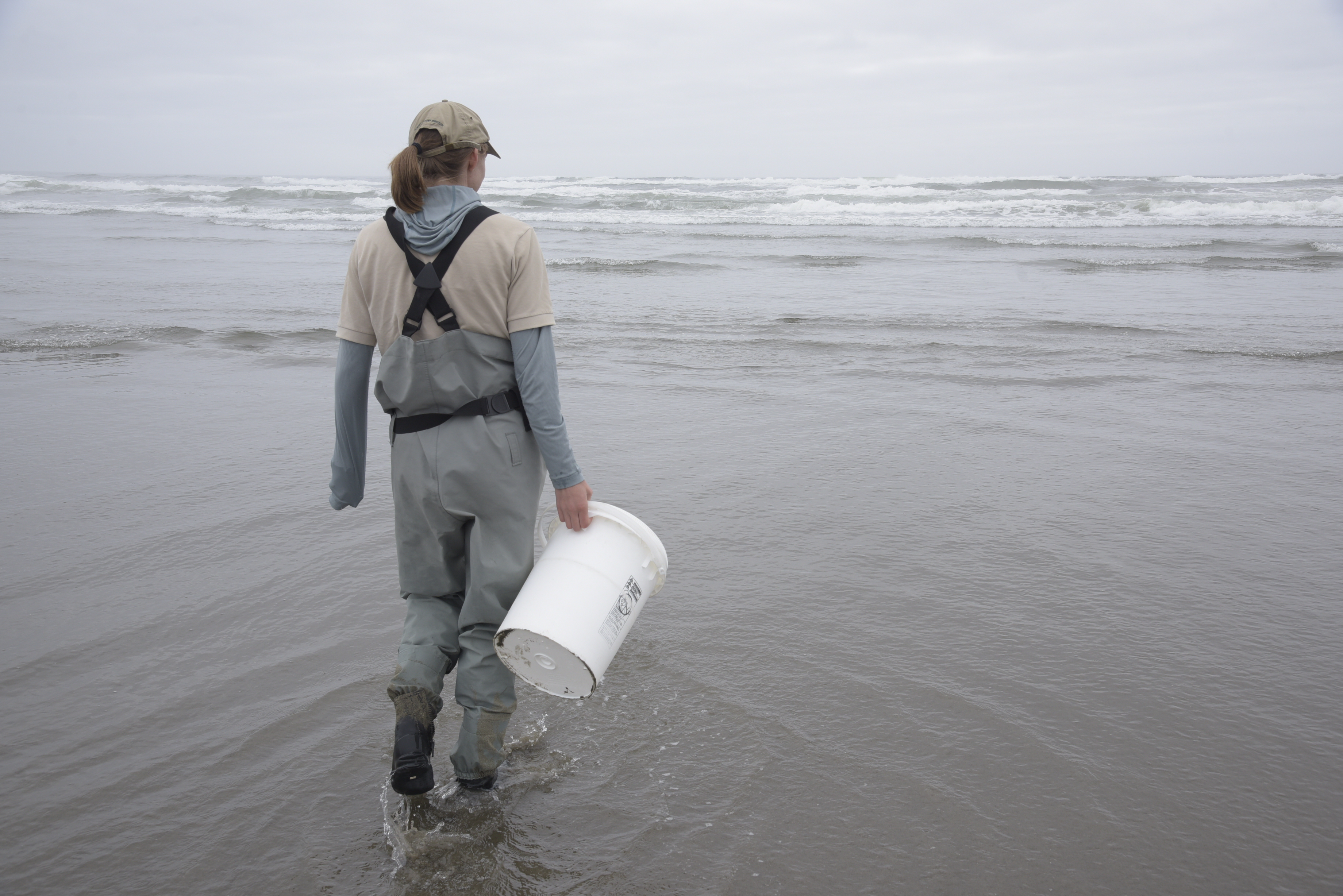Fishers struggle with glut of salmon
Published 5:00 pm Thursday, September 19, 2002
Imports of farmed fish flood marketKNAPPA – Harley Meithe seizes a thick, writhing 35-pound salmon from a mess of fish hoisted out of a holding pen at Big Creek Hatchery.
Trending
He heaves the hook-jawed, saw-toothed lower Columbia River chinook into a blue tote and shouts, “Buck!” as a volunteer tallies the male.
Before the tule – as these chinooks are called – can land with a heavy smack, Meithe has his gloved hands on another one. “Female!” he shouts, tossing it into a separate bin. Crushed ice and red blood flies, evoking images of a hockey game.
Steve Kellow, a Big Creek Hatchery technican, loads totes full of surplus chinook salmon into an American/Canadian Fisheries truck.The hatchery crew counts and sorts about 2,000 tules (too-lees) a day; 25,000 are expected to return this year.
Trending
“It’s probably one of the biggest runs I’ve seen,” Meithe said, a 17-year Big Creek veteran.
The hatchery needs only 2,000 fish to breed next year’s batch. That leaves about 23,000 surplus salmon in a world market overcrowded with mass-produced fish from Chile and Canada.
This glut of imported “farmed fish” is dragging down salmon prices. Local processors can’t pay Columbia River gillnet fishermen enough to make it worthwhile to catch the low-quality tules. That, combined with favorable ocean conditions and limits on fishing to protect endangered salmon species, has resulted in unusually large surpluses for the last two years.
Oregon Department of Fish and Wildlife, which manages 35 hatcheries, including Big Creek, prefers to put the excess to use rather than letting it go to waste.
After brood stock requirements are met, the agency has a list of potential uses for extra fish, said Bill Otto, coordinator for ODFW’s northwest hatcheries.
Sport and commercial fishers are given more opportunities to fish. Live fish are placed in specific locations and encouraged to spawn naturally. Fish carcasses are dumped in streams to restore nutrients that benefit fish and other species. Those fish still fit for human consumption are given to the Oregon Food Bank, he said. (See related story)
ODFW also sells excess carcasses and eggs to wholesale fish dealers.
On Aug. 9, the agency requested bids for this year’s surplus at Big Creek Hatchery.
American/Canadian Fisheries Inc. bid $27,605 for the excess salmon carcasses and eggs. A load of tules is trucked from the hatchery to the company’s processing facility in Bellingham, Wash., each day.
“We have a niche market for that fish,” said company salmon Projects Manager Garrett H. Reynolds. The salmon is smoked and the eggs are sold for bait or human consumption in Asia. The eggs are the most lucrative part.
BENJAMIN ROMANO – The Daily Astorian
Big Creek Hatchery technician Jim Colee, left, and volunteer Louis Calandri herd chinook salmon, known as tules. The hatchery needs about 2,000 tules to replenish its broodstock. This year, 25,000 fish are expected to return, creating a substantial surplus.The sale has raised the ire of local gillnet fishermen such as Jon Westerholm, who represents the Columbia River Fishermen’s Protective Union. While Westerholm acknowledges that the fish ODFW sold could not have been harvested for a profit by local fishers, he’s worried about the precedent.
“Indirectly, it leads to other hatchery sales of good fish,” Westerholm said.
Whether the fish are sold by hatcheries or caught by commercial fishermen, their value when they hit the Columbia River isn’t what it used to be.
When caught off Alaska, Canada and Washington, tules command a higher price. But their condition deteriorates quickly after entering the river and nearing the end of their lives. The meat turns white and loses its texture, oil content and flavor, said Steve Fick, owner of Fishhawk Fisheries in Astoria.
He said he has paid between 4 cents and 10 cents a pound for tules caught in the Columbia this year.
Steve King, who oversees Columbia River fish runs for ODFW, said the price was 25 cents to 50 cents a pound back in the 1980s.
“The value has plunged since the mid-1990s,” he said.
This steep drop in value corresponds with a steep increase in the amount of salmon imported into the United States from industrial fish farms in Chile and Canada.
Since 1996, total imports have more than doubled. In 2001, 180,317 metric tons of salmon were sold on the U.S. market, according to the National Marine Fisheries Service. Forty-eight percent of those fish were produced in Chile and 40 percent in Canada.
“The worldwide glut of farmed salmon has crowded out our wild-caught salmon both in the river and in the ocean,” King said.
Fish buyers are turning to the farmed salmon in greater numbers because it is a low-priced, consistent product.
“They can get exactly what they want, when they want it,” Fick said. “It’s very generic … kind of like a McDonald’s Big Mac.”
But the farmed fish also has a downside. Fick and others have serious questions about the quality of farmed fish, which are raised on chemicals and processed in foreign plants that don’t undergo inspection by the U.S. Food and Drug Administration.
Furthermore, because the farmed fish, raised in pens, don’t get the exercise of naturally raised salmon – which can swim 8,000 miles in their life cycle – farmed fish’s flesh has a softer texture. Fick calls these farmed fish “couch potatoes.”
Producers of naturally raised fish are hoping to stem the invasion of farmed fish by marketing their wild product in much the same way as producers of free-range chickens and organic produce.
“The consumer is willing to pay more for wild fish,” Fick said. “That’s a good indication that we are making strides toward restoring market share.”









